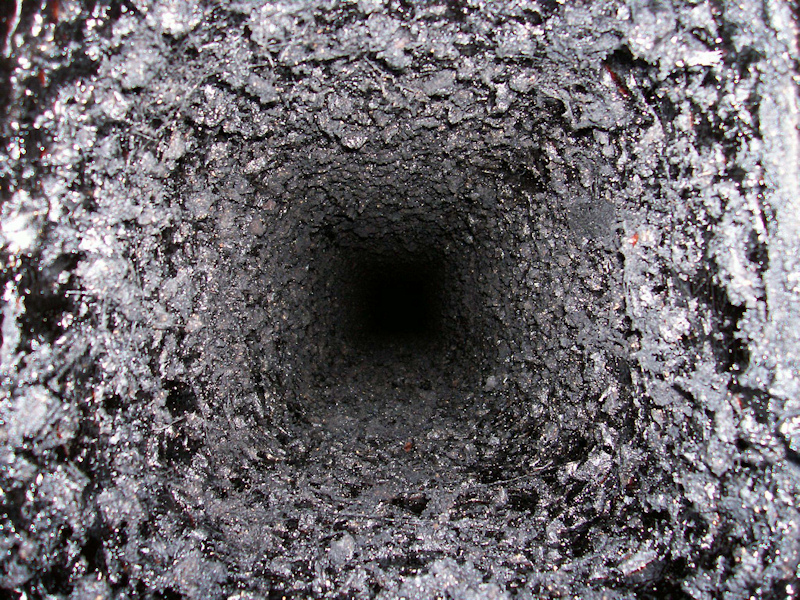What is Creosote?
One of the biggest causes of damage to your chimney is creosote build-up. So what is creosote?
When you light a fire in your fireplace, smoke is release up the flue. The smoke, or flue gas, is made of steam and carbon-based by-products in vapor form. As the smoke travels from the fireplace up the chimney, it makes contact with the flue, which has a much cooler temperature. As a result, condensation occurs.
Now multiply that process however many times you use your fireplace. The carbon-based particles eventually harden within the flue, and that becomes creosote.
Several factors determine how fast the creosote builds up in your chimney. A poor air supply is one cause; a metal lined chimney that maintains cooler than normal temperatures is another condition. Low quality or oversaturated wood can also have an effect.
Creosote has three stages. In Stage 1, creosote is a fine black powder or dust. Stage 2 is when the creosote becomes a more rock-like formation. In Stage 3, the creosote is like tar. It gets sticky and viscous before hardening and having a glaze-like appearance. All three stages of creosote are combustible, but the longer you wait to have it cleaned, the greater your chance of a chimney fire.
Winter is right around the corner. Do you plan to use your fireplace to help heat your home? The National Fire Protection Agency (NFPA) recommends an annual inspection to help prevent catastrophic events. Call us today! We’d be happy to discuss whether the time is right for your chimney to be cleaned.

